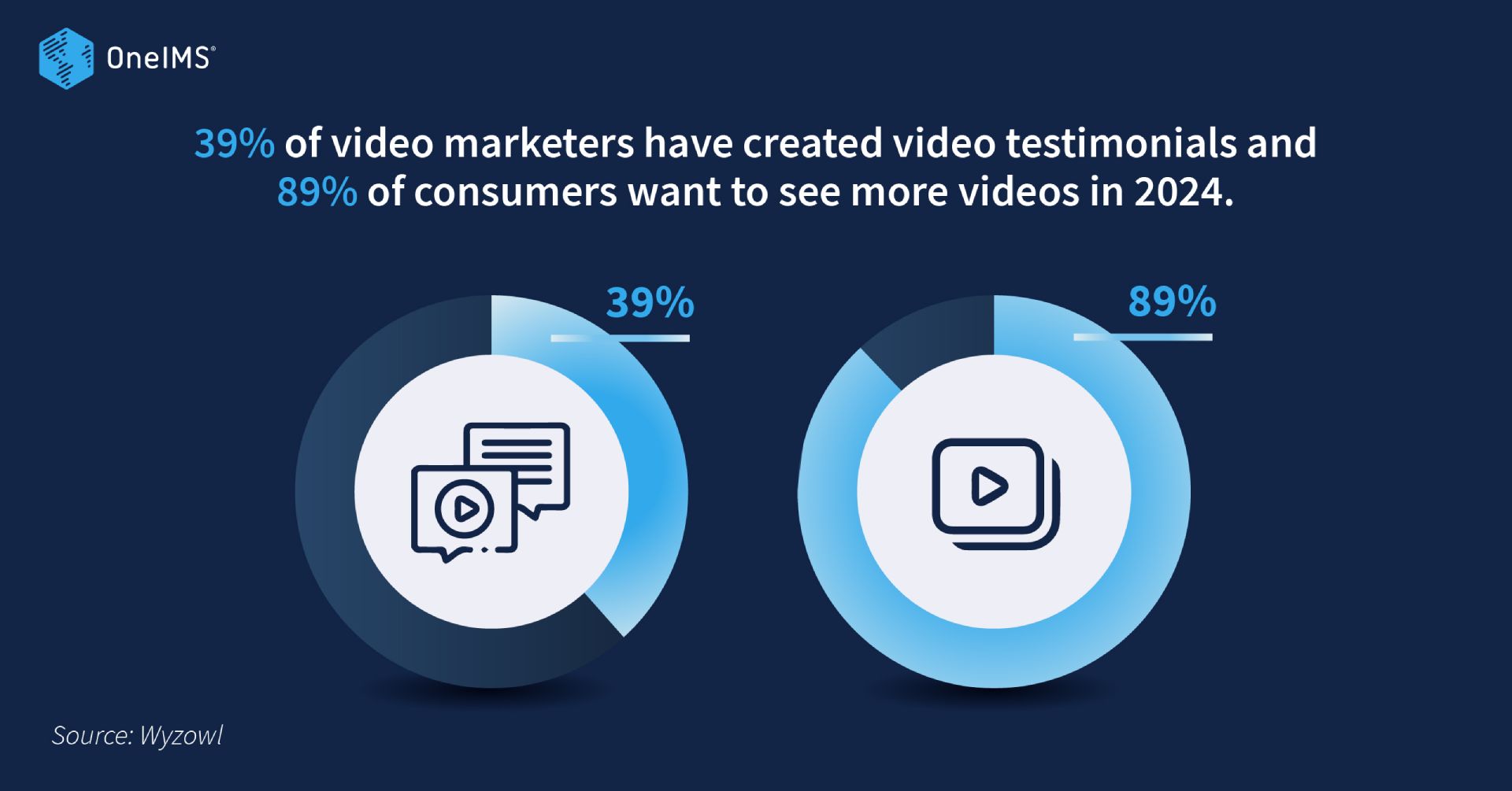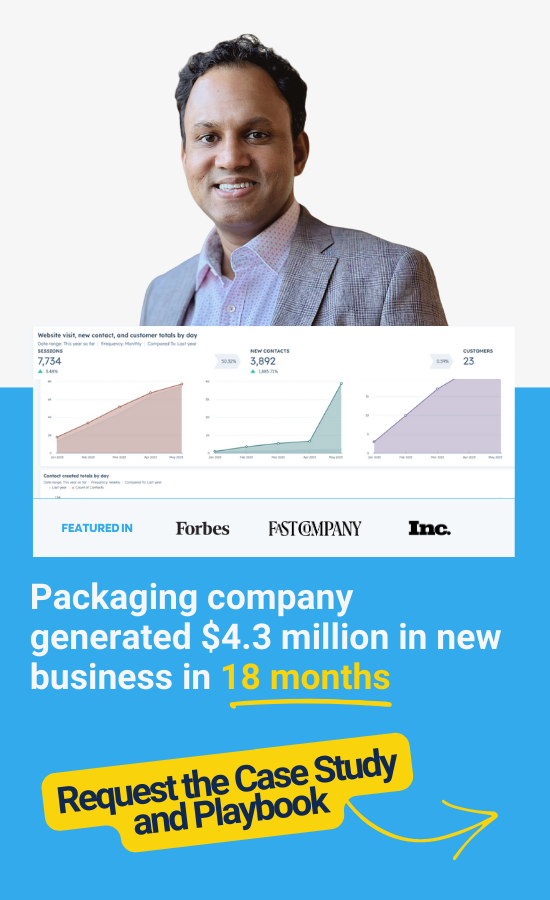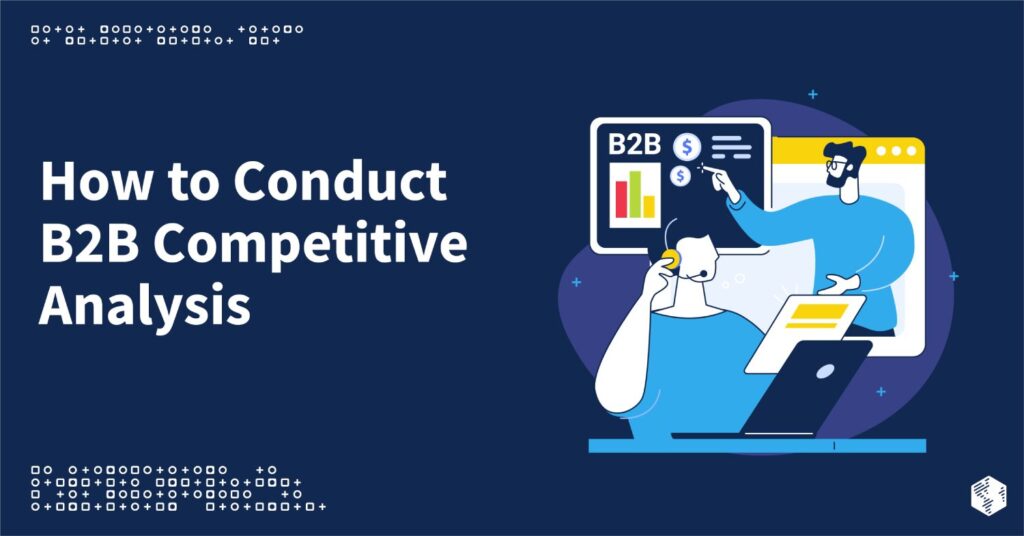Connecting with today’s buyers is more challenging than ever. They’re looking for credibility, reliability, and authenticity—how can B2B organizations rise to the challenge?
Customer testimonials and case studies play a vital role in connecting with modern B2B audiences. By asking happy customers to share their story in their own words, you can create compelling, meaningful testimonials that encourage prospective buyers to make a purchase and lead to long-term, steady growth.
What Are Customer Testimonials & Case Studies?
Customer testimonials are authentic stories, endorsements, or feedback from individuals who have firsthand experience with your products, services, or brand. They help build trust in your company by showcasing people’s confidence and trust in your products or services. Case studies fall under the customer testimonial umbrella but tend to be much more in-depth and informative, including detailed results, statistics, and data concerning overall return on investment.
Video testimonials are especially popular. According to a 2023 study by Wyzowl, 39% of video marketers have created video testimonials and 89% of consumers want to see more videos in 2024.
In other words, now is the time to invest in creating high-quality video-based customer testimonials for B2B audiences.

The Importance of Impactful B2B Case Studies & Customer Testimonials
When the Content Marketing Institute asked marketers about the most effective types of content, 53% agreed that case studies and customer stories lead the pack—tied with video marketing. Additionally, while 67% of marketers used case studies and customer testimonials in 2022, that percentage increased to 78% in 2023.
The numbers don’t lie: Case studies and customer testimonials are now essential to the success of B2B organizations. They act as professional recommendations, build trust with your target audience, provide social proof of brand credibility, add authenticity to your company image, and influence the purchasing decisions of potential customers.
What Makes an Effective Customer Testimonial?
Effective customer testimonials resonate with prospective buyers and convince them that they can experience the same benefits your existing customers do. But what makes a customer testimonial truly effective? Let’s break it down.
It Incorporates Persuasive Storytelling
At its core, a customer testimonial is a (brief) story of a customer’s journey and experience with your company, products, or services. It’s the storytelling elements of a customer testimonial that make it relatable and persuasive as well as transform what would otherwise be a dull series of numbers into a memorable customer journey.
Therefore, the most effective customer testimonials rely on persuasive storytelling techniques, not just the emotional connection with the audience but also regarding their structure (introduction, middle, conclusion, clear call to action ).
It Leverages Powerful Visual & Multimedia Effects
A picture says a thousand words—or, in this case, visual and multimedia effects do.
Leveraging visual storytelling and multimedia elements is a powerful way to make a customer testimonial more interesting, engaging, memorable, and believable. From illustrations and annotations to videos and infographics, visual or multimedia elements can be used to explain, highlight, and simplify different parts of an effective customer testimonial.
It Highlights Problems & Solutions
The perfect customer testimonial highlights a problem the customer faces and shows how your products or services solve that problem, including plenty of details as well as specific examples. Clearly drawing a line between customers’ problems and your solutions makes it easy for prospective buyers to imagine how you can also help solve that same problem for their company too.
It Centers the Customer
Many customer testimonials slide too far into a traditional sales pitch, therefore losing their effectiveness. A customer testimonial or case study should not be about you or your B2B organization—it should be about the customer.
Centering the customer, sharing their story, capturing their voice, and focusing on their problems (and how you solved them) is essential to creating a testimonial that is relatable, personal, compelling, and insightful.
It Showcases High-Quality Production
High-quality customer testimonials require high-quality production value. Effective customer testimonial videos are edited to ensure the storytelling is in an order that makes sense and should have a superior audio, video, and lighting setup before filming. It’s these aspects that make the difference between a “good” customer testimonial into a “great” one.
It Focuses on the Specifics
An effective customer testimonial should be as specific as possible.
Why? Because the devil is in the details.
Measurable results, relevant statistics, detailed stories, and other specifics help prospective buyers visualize how they can achieve the same positive results if they also work with your company. Testimonials and case studies should include specific details while telling the story of the customer’s journey.
It Avoids Anonymity (When Possible)
When a customer testimonial includes the individual’s name, job title, and company or industry, it builds credibility and shows prospective buyers that the testimony is reliable and authentic. Avoid anonymity when possible by including these identifying details, and add a headshot and company logo to further establish its trustworthiness.
Keep in mind that some companies must follow specific guidelines to stay in compliance with industry regulations, so always ask before attributing a testimonial to an individual or company.
It Reviews Your Business (Not Individual Employees)
If a customer gushes about one of your fantastic team members during their testimonial interview, it may be tempting to include their positive words in the final product. However, it’s best to avoid reviews of individual employees.
What happens if your employee leaves the company or industry? You won’t be able to use the testimonial anymore—or, if you continue to do so, it will no longer be accurate, and prospective buyers may feel deceived.
Stick to quotes and reviews that praise your business rather than specific team members.
How to Get Customer Testimonials: 8 Tips & Tricks for B2B Companies
A successful customer testimonial or case study requires careful planning, teamwork, and creativity. Follow these tips and tricks when creating or optimizing your approach to B2B customer testimonials.
1. Identify the Right Customers
Impactful testimonials start with the “right” customers. Look for buyers who meet the following criteria:
- They have had a positive experience with your company, products, and/or services.
- They want to participate and are willing to answer your questions.
- They can tell a story about their purchasing journey.
- They expect to remain loyal to your brand in the long term.
These clients are more likely to share experiences and stories that add value to your customer testimonials.
2. Craft a List of Questions
Whether you are sitting down with a customer on camera or requesting a written review, you need a plan—now is not the time to wing it.
Brainstorm a list of questions well beforehand, ideally those that are designed to curate a positive, impactful, effective customer testimonial. Start with these examples:
- What was your overall experience working with us?
- What was your thought process for choosing to work with us?
- What made us stand out from other options?
- What was it like before using our products/services?
- What problem(s) were you trying to solve with our products/services, and how did our products/services help solve your problem(s)?
- What have you been able to achieve since using our products/services?
- What has made you happiest about working with us?
- What has exceeded your expectations?
- Would you recommend others do business with us? Why?
- What can we do differently to improve your experience with us?
Your questions should direct customers to share their problem and address how your B2B company’s products or services addressed their pain points and made their lives better. Think of this line of questioning as a map; where do you want the conversation to go? How can you lead them in the right direction?
3. Ask for Testimonials at Various Milestones
Ideally, your B2B organization should share customer testimonials at various milestones—after 30 days, after six months, after one year, when they renew, etc. These milestones give customers time to see the true value of your products or services and get a better understanding of their return on investment. Be sure to include customer voices over time and provide a range of testimonials.
4. Invest in the Right Tools & Equipment
Quality is key here. Are you asking a customer to speak on your B2B podcast? You’ll need a high-quality microphone and audio recording equipment on hand. Filming a testimonial video? Ensure you achieve superior audio and visual quality with the right cameras, microphones, and software.
Investing in the right tools and equipment is essential to the production value of the final product.
5. Make It Easy for Customers to Say “Yes”
When pitching customers to ask if they will participate in a testimonial, make it easy for them to say “yes.”
B2B professionals are understandably busy; they won’t have the time or capacity to respond to requests that are vague or missing key details like time commitment and the structure of the potential testimonial. Fortunately, if you preemptively answer their primary questions in your initial pitch, they will be more likely to agree. Include information such as the expected time commitment, questions you will ask, and whether their team will have a chance to review before publication.
6. Follow Up with Existing Positive Reviews
An easy way to find the right customers for testimonials and case studies is to follow up with existing positive reviews, whether they are left on review sites, social media, or in comments to your customer success team. Why? Because if a customer has already gone out of their way to leave a positive review, they are more likely to be willing to provide additional feedback.
Browse positive reviews, thank customers for leaving a review, and ask them if they would be willing to talk about their experience with your team.
7. Incentivize Participation
Video testimonials are a step above written quotes or statements—but sitting down for a video or audio interview takes additional time and commitment from your customers. They may be more willing to go the extra mile if you can incentivize their participation. Offer a free service upgrade, a gift card, or other small token of appreciation when possible to thank them for their time and effort.
8. Get Input from Marketing & Sales
Many B2B organizations leave customer testimonials solely in the hands of their marketing team. And while marketing may take on the bulk of the work crafting testimonials and case studies, it would be a mistake to leave the sales team out of the loop.
Your sales representatives know your customers better than anyone. They work with them almost every day, collect valuable feedback, and have existing relationships with long-term customers.
Ask your sales team to identify ideal customer testimonial candidates and reach out to see if they would be willing to speak on video about their experience with your products or services. Having a familiar face requesting this favor can make all the difference.
4 Ways to Promote B2B Case Studies & Customer Testimonials
For customer testimonials to effectively resonate with potential buyers, they have to be able to find those testimonials. Use these four methods to make sure prospects can find, access, and resonate with your customer testimonials and case studies.
First things first: Share customer testimonials on your B2B company website.
Consider setting up a dedicated page for testimonials and case studies, and include a link to it in your main page navigation so visitors can easily find and explore published testimonials. Ensure the page is branded, visually engaging, easy to navigate, and showcases recent feedback. Additionally, try to include a range of testimonials, not only featuring customers at different milestones but also those highlighting different aspects of your company (like certain products).
2. Post on Social Media Platforms
Customer testimonials lend themselves well to visual media, so create short videos of testimonials or graphics with key quotes and post them across your company’s social media platforms.
Social media is a powerful tool for sharing testimonials with prospective buyers, and it’s also a great method for encouraging followers to leave their own feedback. By posting testimonials on social media, you can also build trust and brand awareness with your audience.
Remember to get permission from customers before posting their testimonials on social media platforms, and ask about their privacy preferences. (For example, businesses in certain industries, like financial services, may request anonymity.)
3. Incorporate into Marketing Materials
Customer testimonials and case studies support marketing claims your business makes. Why not incorporate them into your existing (and future) marketing materials?
Include written testimonial quotes on relevant website pages. Share case studies in your email newsletter. Incorporate clips from video testimonials into presentation slides. The possibilities are endless.
4. Repurpose into Different Formats for Different Audiences
Let’s say you record a two-to-three minute, high-quality, engaging, compelling customer testimonial and post it on your B2B website. That’s great! But there’s no need to stop there. How can you repurpose an existing testimonial into different formats for different audiences? It takes a little creativity, but you can turn one testimonial into several separate assets—saving you time and resources while increasing your return on investment.
- Taking the video from the previous example, you could repurpose it in a few ways:
- Create short 10-second clips to share on social media
- Pull impactful quotes to post on your home page or relevant product pages
- Draft an email newsletter introducing the highlights of the customer’s story (and encouraging subscribers to watch the full video)
- Write a blog post on the topic of the customer’s pain points and use the testimonial as an example or evidence of your company’s success in addressing similar problems
The world (of content) is your oyster.
B2B Customer Testimonial Video Examples
At OneIMS, we have collected testimonials and case studies from several of our client partners. We’ve created a dedicated page, called Success Stories, to exhibit the finished products and to highlight the positive storytelling contained within each testimonial. Following the recommendations described above, the page is easy to navigate, attractive, and displays essential information at a glance (names, job titles, companies, and headshots for each customer).
Let’s take a closer look at two of these customer testimonials in action.
Example #1: Descriptive Storytelling & Clear Recommendation
Meet John Mitchell, Global Marketing Operations & Analytics Manager at Minitab, a company that helps other companies and institutions spot trends, solve problems, and discover valuable insights through data analysis.
His customer testimonial video is authentic and approachable, starting with a hook and clear introduction. John then delves into a clear description of the problem he was facing pre-OneIMS—a lack of resources, support, and expertise in an agile company with a small marketing team.
After clarifying the pain points he was facing at Minitab, John gives a brief but descriptive explanation of how OneIMS provided a new perspective, specialized advice, and became a partner not only in the marketing department but also in the operations department and within the content team.
John also shares a specific example: HubSpot templates. While HubSpot is a powerful automation and inbound marketing tool, it’s only as good as its users. OneIMS assisted with building effective HubSpot templates and transformed Minitab’s use of the popular content management system.
He ends the testimonial with a clear recommendation and call to action for prospective customers.
Example #2: An Authentic Look at a Long-Term Partnership
Say hello to Corey Gustafson, President of JohnsByrne, an innovative premium packaging and printing company.
This customer testimonial video starts with a bit of company history, including a memorable story of how the “JohnsByrne” name came to be. Corey talks about how the long-term partnership with OneIMS first started—when they initially reached out to us, JohnsByrne had a website. That’s it. In other words, the problem was that they had very little digital presence and no inbound marketing strategy.
Corey follows up the description of the problem by sharing how OneIMS helped the company learn how to leverage their website, search engine optimization (SEO), digital marketing, etc. to draw in new customers and attract prospects. He explains that OneIMS showed them how to use HubSpot to statistically measure outreach and, throughout the long-term partnership, has become fully immersed in the JohnsByrne team.
Like the first example, Corey concluded the testimonial with a clear, positive recommendation.
What Do These Customer Testimonial Video Examples Do Well?
These two examples of customer testimonial videos follow several best practices:
- They include both a written and video testimonial on each page.
- They feature a clear story structure: introduction, problem, solution, example, conclusion, CTA.
- They attribute their praise and feedback to the company instead of an individual employee.
- They have high production value with clear visuals and audio.
- They include specific examples and address the problem/solution.
Thanks to careful planning, research, and execution, these customer testimonial videos are powerful assets OneIMS can use to meaningfully connect with prospective buyers.
Conclusion
B2B case studies and customer testimonials are essential for increasing brand credibility, resonating with potential buyers, and building deeper relationships with both existing customer and high-quality leads. By using the techniques and guidelines described in this article, your B2B organization will be ready to create and implement a successful customer testimonial strategy in 2024.
Need help optimizing your customer testimonial strategy, connecting with B2B buyers, and growing your business? We’re ready to partner with you. Schedule a consultation with us today to learn more about how OneIMS can propel your B2B business to new heights.


































